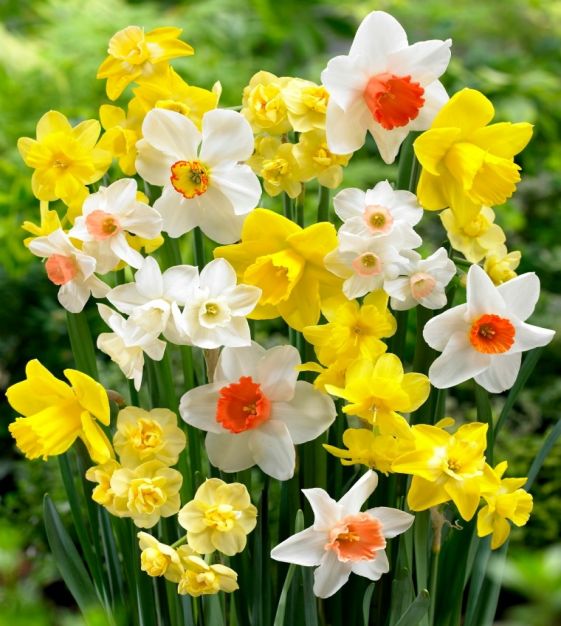Week 14: Spring Reflection
You may remember from your biology class that “Kickass Petals Can Obfuscate Folks’ Gardening Stratifications.”
With that in mind, I’m thinking about the taxonomy of some spring flowers. It starts out pretty simply, they are obviously Plants, so they go in that Kingdom. Their Phylum was once called Magnoliophyta, after the French botanist Magnol, but today we call them Angiosperms. Their Class is based on the fact that they produce seeds, so they are in Liliopsida, together with Lillies. They all grow kinda like Asparagus do, with tall stems that shoot up out of the ground each spring, so they are in Order Asparagales, along with other things like Onions. And they are in the same Family as their cousin the Amaryllis – symbolic of Christianity’s second-most-important holy day – with three strap-shaped leaves down near the base of the plant, and a tall stem that presents the flowers, so they are in the Family Amaryllidaceae.
And so we get: Plant > Angiosperm > Liliopsida > Asparagales > Amaryllidaceae
But when we get down to Genus, we need to go deeper, and look further back, all the way to ancient Greece. Ovid tells us that there was once a young hunter named Narcissus, who was so handsome that a wood nymph named Echo tried to entice him by secretly following after him and repeating everything he said. When she finally got up the nerve to reveal herself, he rejected her, and she sadly hid herself away, reduced to nothing more than a repetitive sound.
This rejection drew the attention of the goddess of revenge, Nemesis, who lured Narcissus to a clear pool. When he looked in and saw his reflection, he was so captivated by his own beauty that he was immobilized, and his self-passion eventually transformed him into a gold and white flower.
And so, if you visit a garden this weekend, you may see such a flower and say, “My what a beautiful Narcissus!” You will be technically accurate, as all the flowers in question are in the Genus Narcissus.
But they aren’t very commonly called that. There are hundreds of Species of Narcissi, and whether they are white, yellow, or some combination thereof, and shot through with orange, pink or even lime green, almost everybody calls them all just…Daffodils. Sometimes they are so striking get an extra adjective, such as ‘Poets Daffodil,’ or ‘Rip van Winkle Daffodil.’ And two are so unique they’ve earned a special name of their own; ‘Jonquils’ have clusters of flowers instead of singles, and ‘Paperwhites’ have thin flowers like papyrus. But you can still call them all Daffodils, and all Daffodils are technically some kind of Narcissus.
(Now, there is some dissent about this nomenclature. Some botanists offer an alternative etymology, suggesting that ‘Narcissus’ is actually a reference to the Greek word, ‘Narkao’ which means “I grow numb” and from which we get ‘Narcotic.’ And the plants certainly do have a toxin strong enough keep the deer from eating them.)
But for most folks, when you see a Daffodil and you hear, ‘Narcissus,’ you can’t help but think about a hunky hunter.
All of which results in a seasonal irony playing out in your yard. To wit: the single-most important Christian holy day is a testament to self-sacrifice. And it’s marked by an ancient myth and a profusion of color that screams self-involvement.
